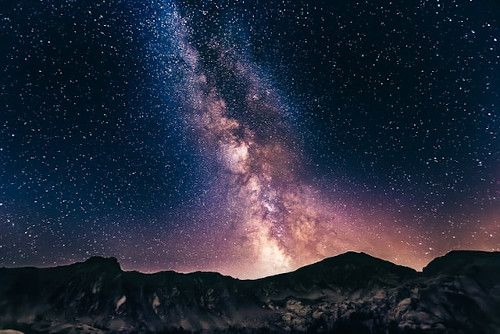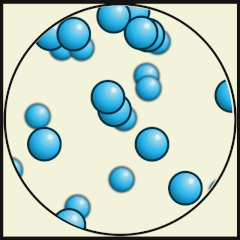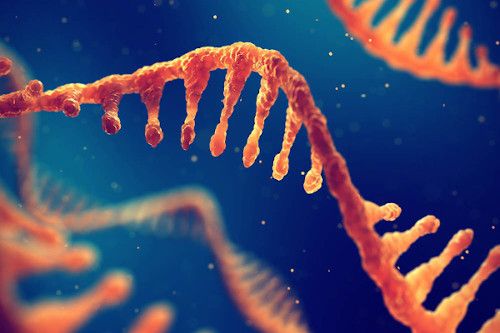Hello everyone,
As usual, I hope you are all well. I want you to contemplate all the factors that your wellness depends on. Many of you will think instinctively to your loved ones; your friends and your family. You may also be thinking of the material things needed to sustain your life; food, water, air. I wonder if anyone thought of space, or that there is a reality existing at all, and that its natural laws permit the emergence of creatures such as us.
We are faced with a strange circumstance; we have all woken up in this strange and beautiful cosmos and now are tasked with how to spend our time here.
I have been making progress watching Carl Sagan’s original cosmos, and every episode is far more wonderful than I could have predicted.
I remember, a scene where Carl is teaching a class of children — one curious child asked if our sun was a part of the Milky Way Galaxy.
“You are a part the Milky Way galaxy.”
Carl Sagan’s response
When we look up to the night sky and contemplate the universe, it can feel foreign, alien and far-removed, but we are wrong to feel this way, this is our home.

We continually overlook this truth, but it really is incredible to be here.
How fortunate to be a part of all this, to be witness to the reality of which we are a part!
“Look up at the night sky. We are part of that”
Neil DeGrasse Tyson
“The story of the universe is our story”
Brian Cox
How did this all happen? I wrote about the Big Bang, the cosmic event that started the show we know as this universe in my letter The Beginning of it All.
In this letter, I will go into the story of life — that is; our story — how did we find ourselves in this vast and awesome place?
What it takes to exist
In his groundbreaking 1976 book The Selfish Gene, Richard Dawkins laid out two different types of phenomena in the universe that deserve a name.
- A phenomenon that can endure the passage of time once it has formed
- Or one that is able to form easily
“A stable thing is a collection of atoms that is permanent enough or common enough to deserve a name.”
Richard Dawkins, The Selfish Gene, Ch 2
A mountain endures over the centuries, and therefore we give them names.
A raindrop is a fleeting phenomenon, but they occur so frequently that we have a label for them.
In general, across the universe, when we take a look at all phenomena that we can observe they fall under these two categories. They are able to persist when they have formed, or that the conditions of their formation happen frequently enough for them to be.
This is referred to as survival of the stable.
The Story Begins
Once upon a time, on a small rocky world, orbiting a fairly ordinary star in the outer suburbs of the Milky Way, a new type of phenomena arose in this universe.
One which did not form readily throughout the universe and could not sustain its form for very long. It was neither common nor was it long-lasting — so why is it that we can talk about it today?
It could not last long, but it had a special property — it was able to replicate, that is; make a copy of itself — in the time it was around.
Even though it did not last long by itself, it could make copies that would continue after its decay. These copies, in turn, could make copies and so on so forth.
Despite being unlikely to form, it only had to form once, and the process would be set in motion.
This was a whole new type of phenomenon arising in the cosmos[1], it could not hold its form, nor was it readily formed — rather it made its way by replicating itself.
We call this phenomenon, life.
A long time ago, on the planet that we call home, conditions were very different. The sky was a dull orange, the atmosphere of ours was filled with carbon dioxide, and it was way hotter than any of us could imagine.
I want to take this chance to remind you — dear reader — what exactly heat is.
What we call heat, at the atomic level is the vibration of matter. We are made of tiny particles called atoms, and heat is the shaking of these atoms. The coldest anything can be is -273.15° Celsius, or absolute zero. At this temperature, the atoms are entirely at rest, with no motion at all. The hotter it gets, the more they move.
Think about water for a moment. At first, you have ice, and it is cold; therefore, there is not much movement in its molecules. You heat it a little, and it starts to melt, the molecules of water move a bit more freely. You heat the water further, and it starts to bubble up, and even more and it disperses into steam.
Heat is nothing more than the shaking of the particles that make up a substance, that water — or anything — is hot, means nothing more than that the atoms and molecules that make it up are flailing about vigorously.
Back to our ancient planet, everything was hot. The substances on the earth’s surface and atmosphere were moving about very fast all over the place.

Since it was so hot, atoms and molecules were flying about and were colliding into each other all over the place. When they collide, they would merge and form new molecules, but as it was so hot, these were unstable and would soon break apart. This was happening all the time; there were probably trillions upon trillions of these collisions occurring on the planet at any moment. All sorts of interesting combinations would have formed momentarily and dissolve.
None of these momentary arisings however would deserve a name.
One day a combination of atoms came about that that the ability to replicate itself.
At its face, it may have seemed an unlikely event, with the probability of one in trillions...
But there indeed were trillions of chances!
The collisions that took place happened all over the world, all of the time.
With enough scope in space and time, unlikely events become all but certain.
A molecule was born that could make a copy of itself before it broke apart.
And thus, the story of life begins...
Let’s jump to the present era.
What would happen if a scientist today were to recreate the conditions of four billion years ago? Would we see the building blocks of life?
Yes. We have done it.
Scientists have gathered what are believed to be the compounds present in the early earth; water, carbon dioxide, methane and ammonia, and exposed them to high levels of energy so that their molecules would collide and react with one another.
What do we see?
After a few weeks of this, we find amino acids — the building blocks of proteins!
But not only this, but in such simulations of the early earth we have also formed purines and pyrimidines — the building blocks of DNA itself!
In the confines of a laboratory after only a few weeks, we have seen organic matter arise entirely from inorganic materials.
Is it so hard to believe that with the field of the entire earth and tens of millions of years a replicator itself could form?
That is; is it hard to believe that life itself could arise from that which is not living?
An Unbroken Thread
We do not know exactly what the original replicator was. It has been postulated that it may have been similar to what we call RNA. RNA is simpler than the DNA we possess; it has a single helix as opposed to the double helix of DNA.

Given their similarities, we are sensible to believe that our DNA evolved from it.
RNA still exists in our cells and is used to transmit information from the genes to other parts of the cell.
Many viruses — such as COVID-19 — hold their genetic information in RNA as opposed to DNA.
But as remote, as foreign the original replicator’s form may be, it was our original ancestor. Our greatest grandparent of them all[2].
If you take your mother and father, then go back to their parents, and then your great grandparents, and follow this all-the-way back to the beginning, it is here you will reach.
This is how we came to be.
The Secrets of Evolution
“The beauty of a living thing is not the atoms that go into it, but the way those atoms are put together.”
Carl Sagan
When we have an understanding of how the replicator — that is; how life — can arise from non-living materials, we have solved the hard problem.
The next problem is; how can a vast diversity of complex organisms spring from a simple replicator?
This one is much simpler. The theory of getting from here to there is one of the most well-explained theories in all of science. We call it; evolution.
Replicators make copies of themselves. They achieve this by attracting the molecules it needs from the surrounding environment. As you would expect, though, such a process is far from perfect, and errors are prone to be made. On these occasions, rather than making a perfect copy, there are slight differences.
In biology, we call these differences, mutations.
Many of these mutations are neutral, that is; they do not impact the replicators ability to survive and function.
Many more are bad; they adversely affect the new replicator.
However, a tiny number of these mutations, actually improve it.
It is this handful of positive changes that is the key to understanding the diversity of forms we see today.
As the process of replication churned and inevitable errors accumulated, one population of replicators soon became multiple.
There were now different strains of replicators, but there were limited resources.
This is the dawn of what the famed Charles Darwin referred to as survival of the fittest.
Not all replicators could survive. Some replicators were better at surviving and replicating than others. These were the ones that survived.
Over time, the population of replicators is filled only with the creme de la creme.
But then more mutations happen, along with more improvements. The cycle starts over, and as time passes, the replicators continue to evolve, accumulatively improving on themselves one change at a time.
So we have a process that looks like this:
- Errors in replication
- A tiny amount of these are actually improvements
- Limited resources means the worse replicators die, the better ones survive
- Lather, rinse, repeat
With the passage of millions of years, many of these changes developed and exotic and innovative adaptations emerged. Some replicators gained the ability to absorb their rivals and became the first carnivores. Others formed a protective wall, a bubble around them, and thus became the first cells.
“The secrets of evolution are time and death. There’s an unbroken thread that stretches from those first cells to us.”
Carl Sagan
Eventually, a mutation came about that allowed similar cells to band together and share resources to each other’s mutual benefit. The first multicellular organisms were born.
But something else was changing. Remember how I described a scorching hot earth? What was keeping it warm, was the carbon dioxide and other greenhouse gases in the air. Living creatures like ourselves and the replicators that we came from, are made up of carbon. As our ancestral molecules continued to replicate themselves, they used more and more of the carbon in the atmosphere.
The earth started to cool down.
Also, the oxygen trapped in the carbon dioxide returned to the air and the orange sky turned blue.
The hot earth of the past was the reason large structures could not form. With all the energy in the air, the atoms would not remain, and any sufficiently large masses would fall apart after forming. Now with a cooler earth meant that life could evolve even further and take larger and more intricate forms.
With the cooling down, much of the water vapour in the planet’s atmosphere condensed and formed the oceans.
The arena that our replicators had to compete in and adapt to was now an aquatic one. In it — over hundreds of millions of years — the familiar forms of animals, plants, fungi, bacteria and protists emerged and thrived.
Please take the time now to the video below to get a sense of how all of this happened.
In the four billion years since, these forms have proliferated and spread to all corners of this world that we know and love.
One of the descendants of this lineage of life, is you, dear reader.
In the beginning of this letter, I asked you to consider all the conditions that your flourishing depended on. You may have thought of your family, but I bet you didn’t think of your ancestors from four billion years ago.
We have far more to be grateful for than we are aware.
Speaking of gratitude, thank you, dear reader, for reading until the end of yet another of my letters. I sincerely hope you have been enjoying and deriving benefit from these.
May you make the most of this strange and wonderful circumstance.
Have fun,
Sashin
Discussion